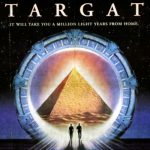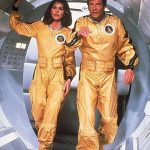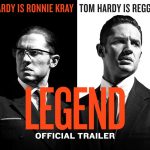The Mummy (1999)

In the summer of 1999, a new kind of adventure movie captivated audiences around the world: The Mummy. Directed by Stephen Sommers, the film blends elements of action, horror, and fantasy, creating an unforgettable cinematic experience that has stood the test of time. While it’s a remake of the 1932 classic horror film of the same name, The Mummy (1999) brings a fresh perspective, with a focus on thrilling action sequences, humor, and cutting-edge special effects that set it apart from its predecessor.
A Gripping Plot of Discovery and Danger
Set in 1926, the story follows adventurer Rick O’Connell (played by Brendan Fraser) as he teams up with a curious and ambitious librarian, Evelyn Carnahan (played by Rachel Weisz), and her brother Jonathan (played by John Hannah). Together, they embark on an expedition to the ancient city of Hamunaptra, also known as the City of the Dead, where they accidentally awaken the cursed high priest, Imhotep (played by Arnold Vosloo). Imhotep, who was mummified alive for his forbidden love and betrayal, returns to wreak havoc upon the world.
What follows is a thrilling race against time as Rick and his companions must stop Imhotep before he unleashes ancient plagues upon Egypt and resurrects his lover, Anck-su-Namun. The adventure takes the audience through breathtaking settings, including mysterious desert landscapes, dark tombs, and thrilling chases through ancient ruins, blending ancient mythology with pulse-pounding action.
Brendan Fraser’s Star Power
Brendan Fraser’s portrayal of Rick O’Connell was a key factor in the film’s success. With his rugged charm, humor, and athletic performance, Fraser brought a modern Indiana Jones-like figure to the screen. His chemistry with Rachel Weisz, who portrayed the intelligent and endearing Evelyn, added a layer of warmth and romance to the story. The film’s ensemble cast, including the witty John Hannah and the intimidating Arnold Vosloo, added richness to the film’s dynamic.
Visual Effects and Cinematic Magic
The visual effects in The Mummy were groundbreaking for the time, especially in bringing the undead to life. Imhotep’s regeneration process, where he slowly regains his human form, was a major technological achievement in CGI, mesmerizing audiences with its realism. The film also features stunning set designs, massive action scenes, and iconic moments like the sandstorm chase and the terrifying resurrection of the mummy’s servants.

Sommers’ direction combined these technical marvels with an engaging script, humor, and classic Hollywood spectacle. The combination of scares and laughs kept audiences on the edge of their seats, while the film’s epic scale made it a must-see on the big screen.
Legacy and Lasting Impact
The Mummy became a massive success, both critically and commercially, grossing over $400 million worldwide and leading to a popular franchise that included The Mummy Returns (2001), The Scorpion King (2002), and The Mummy: Tomb of the Dragon Emperor (2008). Its unique blend of action, horror, and comedy influenced many future adventure films.
Even more than two decades later, The Mummy (1999) remains a beloved film for its mix of thrills, humor, and heart. It set a high standard for adventure films and gave audiences a story full of excitement and wonder that they would revisit for years to come.
Suggested videos for you:











